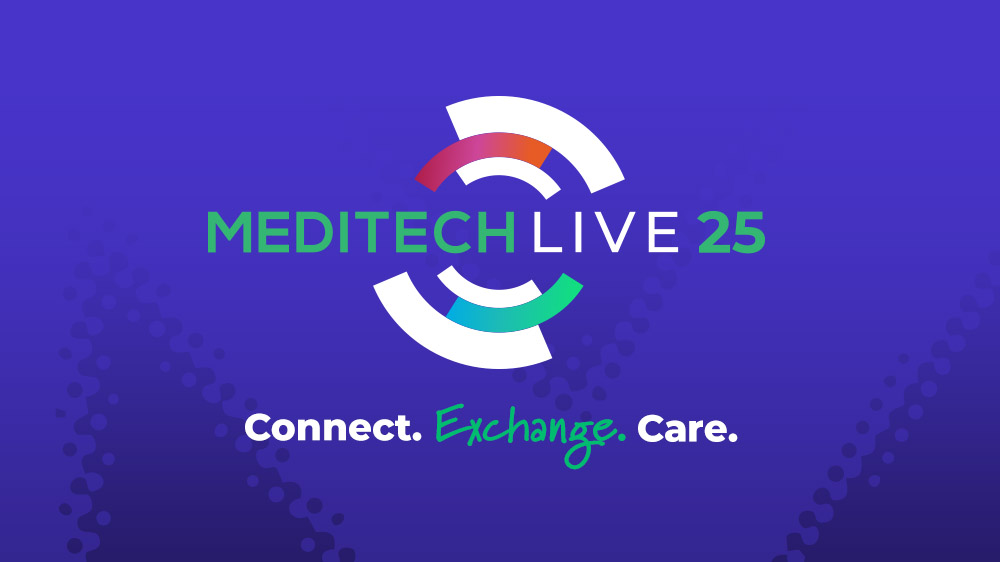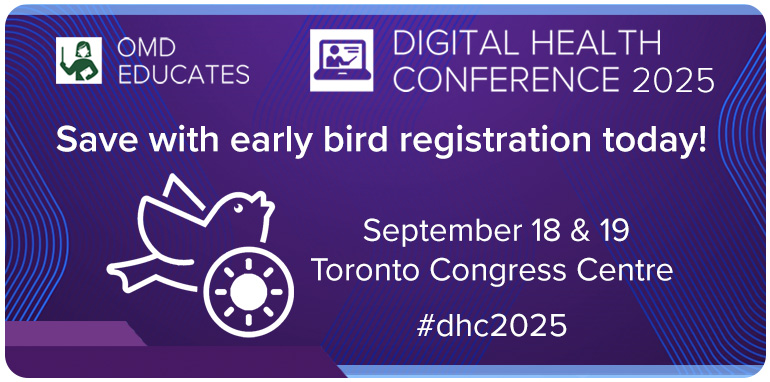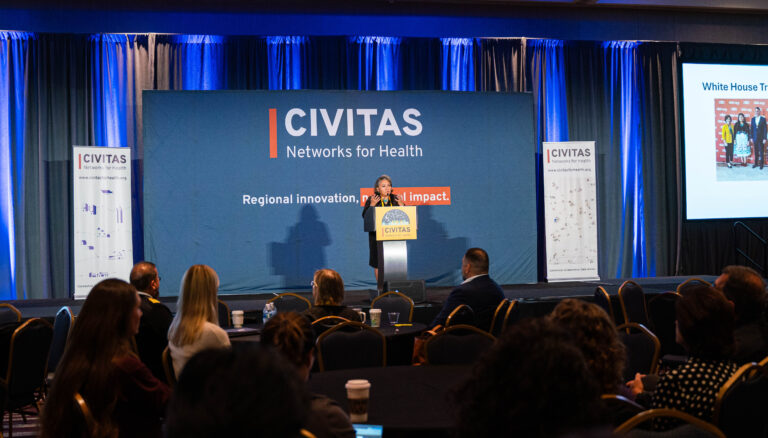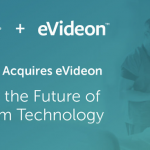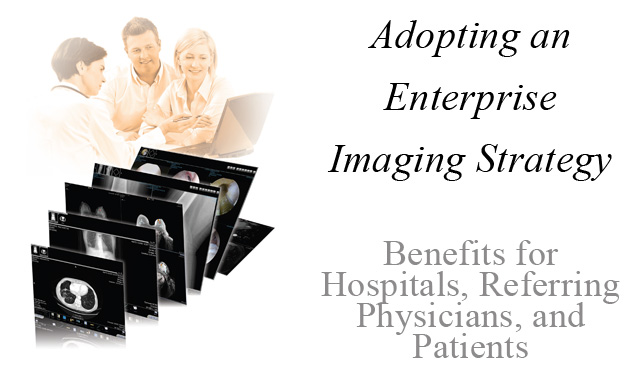Introduction
An auto accident victim with head injuries is rushed by ambulance to the nearest community hospital, where he is given a CT scan of the head. After reviewing the scan, the ER doctor decides that the patient needs a higher level of care than the community hospital can provide. The patient is transferred along with a CD of the scan to a Level 1 trauma center. However, the trauma center’s picture archiving and communication system (PACS) cannot read the CD, so the patient undergoes another head CT scan. The manual process of sharing diagnostic images on CD delayed treatment for an injured patient, exposed the patient to unnecessary irradiation, and required a duplicate test that the patient’s insurance may not cover. If the community hospital had an enterprise imaging strategy in place, its ER physicians would have been able to send the CT image electronically in a standardized format in real time to the trauma center. A radiologist at the trauma center could have used their native system to quickly determine that trauma-level treatment was not necessary. The patient would have received care without delay and would have avoided additional, potentially harmful radiation without incurring duplicate costs.
Although this example is fictitious, it illustrates an all too real scenario that plays out in hospitals,emergency rooms, and specialists’ offices across the U.S. every day – and the statistics illustrate the seriousness of the situation:
> The National Council on Radiation Protection and Measurements (NCRP) reported in 2009 that U.S. patients’ exposure to ionizing radiation – delivered through millions of CT scans and other radiation-generating procedures performed annually – has almost doubled over the last 20 years.
> According to a study published online in Radiology, from 1995 to 2007, the number of visits in which a CT scan was performed increased 6-fold, from 2.7 million to 16.2 million, representing a growth rate of 16% per year. The percentage of visits that were associated with a CT scan also increased substantially, from 2.8% of all visits in 1995 to 13.9% of all visits in 2007.
> Just one CT scan exposes a patient to the same amount of radiation as 100 chest x-rays, according to a 2010 study by the Center for Devices and Radiological Health and the U.S. Food and Drug Administration. The radiation level in one CT scan of the abdomen is approximately the same as 400 chest x-rays.
> According to the American Society of Radiologic Technologists, healthcare organizations generate close to 600 million diagnostic imaging procedures annually.
> A 2009 report on the CBS Evening News indicated that $100 billion of annual healthcare costs are related to diagnostic imaging tests– but an estimated 35 percent are unnecessary scans. That translates to $35 billion in unnecessary costs for U.S. patients and insurance providers. Research and anecdotal evidence alike build a strong case for why diagnostic images should be easily accessed and shared electronically across
healthcare enterprises, regional healthcare information organizations (RHIOs), and statewide health information exchanges (HIEs). Why?
Diagnostic images make up a critical part of the diagnosis process. Yet today, the most common way they’re exchanged among providers and
referring physicians is by making a copy of the image onto a CD and giving it to the patient to take to the next appointment at a specialist’s practice or a hospital – an inefficient process that lends itself to human error and the risk of the CD being unreadable on the facility’s PACS.















